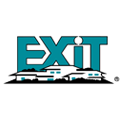This article first appeared on www.nawrb.com and is reprinted with the permission of Women in the Housing and Real Estate Ecosystem
California has dealt with an onslaught of fires in the past few weeks. The Mendocino Complex Fire, Carr Fire, Ferguson Fire and Holy Fire are some of the largest that have been ravaging the state from North to South. While Cal Fire firefighters still work hard to contain these fires and affected homeowners plan their next steps, it is important to know about the available resources for financial and physical damage recovery.
Largest California Fires
The three largest fires in the state include the Mendocino Complex fire, the largest in California’s history, which has burned more than 304,000 acres in Ukiah and Hopland, CA ; the Carr Fire in Shasta County, which has burned over 177,450 acres and killed eight people; and the Ferguson Fire near Yosemite National Park, which has consumed 95,000 acres and killed two people in the last three weeks.
Another fire close to NAWRB’s headquarters in Irvine, CA, is the Holy fire that began in Cleveland National Forest and continues to burn across Orange and Riverside counties, which happen to be two of the state’s most populous counties. So far, it has decimated more than 9,600 acres and remains only 5 percent contained.
Resources
No matter how close your home or business is to wildland areas, it’s always best to be prepared in case of emergency evacuation, prepare your home to mitigate potential for damage, and have knowledge of your local and national recovery resources.
Immediate Assistance
Wherever you are in the United States, whether you are a resident, homeowner, business owner or all of the above, when disaster hits, there are resources to help you. Immediately after a disaster, contact your local fire department, Federal Emergency management Agency (FEMA), Red Cross, and the Disaster Assistance Improvement Program (DAIP) for urgent needs like aid and shelter, various support services, and up-to-date information.
For specific information about fire safety and programs, find out if your county is associated with a fire authority and make sure to visit their website and save their contact information. The Orange County Fire Authority (OCFA), for instance, provides citizens with status updates and a plethora of resources for residents and business owners, including step-by-step guidelines for emergency evacuation, disaster preparedness and fire safety.
Disaster Recovery Loans & Financial Assistance
FEMA
James K. Joseph, Regional Administrator of FEMA Region V was a panelist at the recent 2018 NAWRB 5th Annual Conference, “Year of Women,” where he gave an informative overview of FEMA services. For instance, in times of natural disaster, FEMA will mobilize resources in time of major natural disasters, but the true first responders will be local service departments in state and nearby states before FEMA assists the area.
FEMA can help kickstart recovery, but it does not have the capacity to completely finance the recovery of homeowners and businesses who have suffered damages. The maximum grant amount that applicants can receive is $34,000, but the average homeowners will commonly be awarded $4,000 to $6,000.
Homeowners will receive a greater payout from an insurance, which can amount to six-figures for their recovery needs. This is why it’s important to have more financial advisors to help homeowners be more financially resilient and more realtors to help renters become homeowners and assist homeowners in acquiring good insurance.
Joseph states that the most prominent job of FEMA is to “Help people prepare before, during and after a disaster.” To do this, FEMA facilitates the coordination of all federal agencies to the table to assist people during a natural disaster. As he articulates, what is key is what we do before a disaster to help American citizens be prepared.
SBA Disaster Loans
According to the Federal Emergency Management Agency (FEMA), 75 percent of small businesses do not have a disaster plan. Furthermore, 40 percent of small businesses displaced by a natural disaster do not reopen because of exorbitant costs. Two out of 3 homes in the United States are underinsured by 22 percent, reports Value Penguin.
The SBA offers low-interest disaster loans for businesses, private nonprofits, homeowners and renters who need assistance with uninsured costs. Even those insured for natural disaster damage are encouraged to apply for a SBA Disaster Loan The SBA can lend you the amount of your total loss, even if you are unsure about how much your insurance will cover.
During Fiscal Year 2017, the SBA approved a total of 27,263 disaster loans for a total of $1.7 billion— $1.3 billion for home disaster loans and $296 million for business disaster loans. The SBA processed 84,705 home loan applications and 10,882 business disaster loan applications, making a total of 95,587 processed loan applications.
Resources for Renters and Homeowners
Renters and homeowners are eligible to apply for the SBA’s no cost, low-interest rate disaster loans even if they do not own a business. According to the SBA website, renters and homeowners may borrow up to $40,000 to repair or replace clothing, furniture, cars or appliances.
Homeowners may borrow up to $200,000 to repair or replace their primary residence to pre-disaster condition. Moreover, loans may be increased up to 20 percent of total amount of physical loss to make improvements that lessen the risk of future property damage.
Renters and homeowners can apply for both FEMA assistance and SBA disaster loans simultaneously with zero cost, so do not wait until you get a response from FEMA. You do not have to accept an SBA low-interest rate loan even if you are qualified.
Resources for Small Businesses
Small business owners have additional resources at their disposal during the recovery process. If you have a loan from the SBA, you may be eligible for deferred loan payments. For instance, if your loan postdates August 25, 2017 and you are located in a federal disaster area, your principal and interest payments will be deferred for 12 months. If your business is located near a disaster area, you may be eligible for a 9-month payment deferral.
Small business owners can apply for federal assistance—in the form of cash grants— through the FEMA, online or by calling 1-800-621-FEMA. Local Small Business Development Centers (SBDCs) are available to help small businesses complete forms for disaster relief, recover records and relaunch their businesses.
Businesses can be proactive in protecting themselves against damages from potential natural disasters by being insured for Business Interruption. Many commercial insurance policies provide coverage via endorsement for business income loss due to a direct loss, damage or destruction to the insured property by a natural disaster.
Whether you are a renter, homeowner, business, or nonprofit, know that there is always support available to you in times of need. NAWRB continues to build an all-inclusive resource center to help those affected by these recent natural disasters find resources that can help them rebuild their homes, restart their businesses and regain a sense of stability in their lives.


